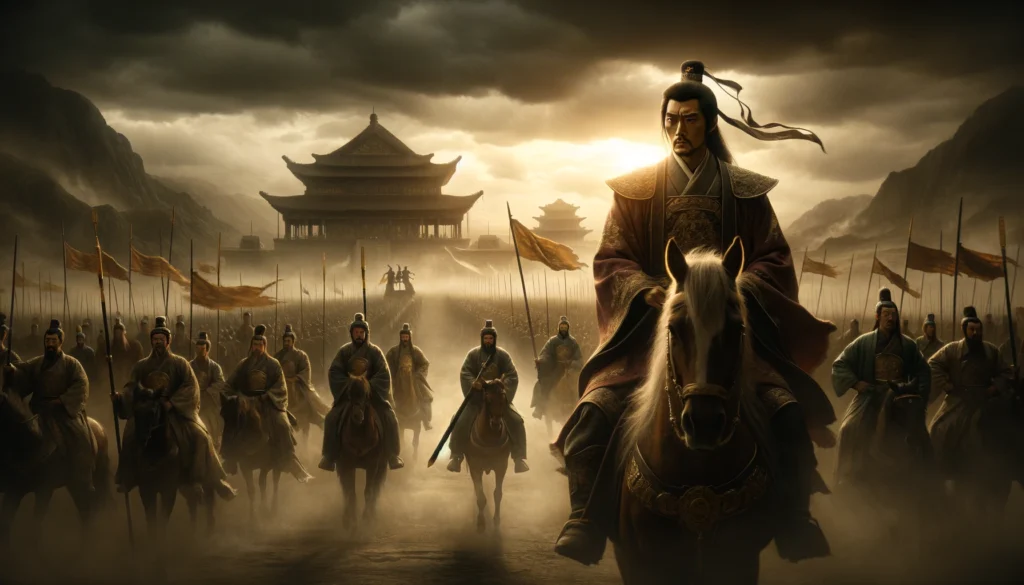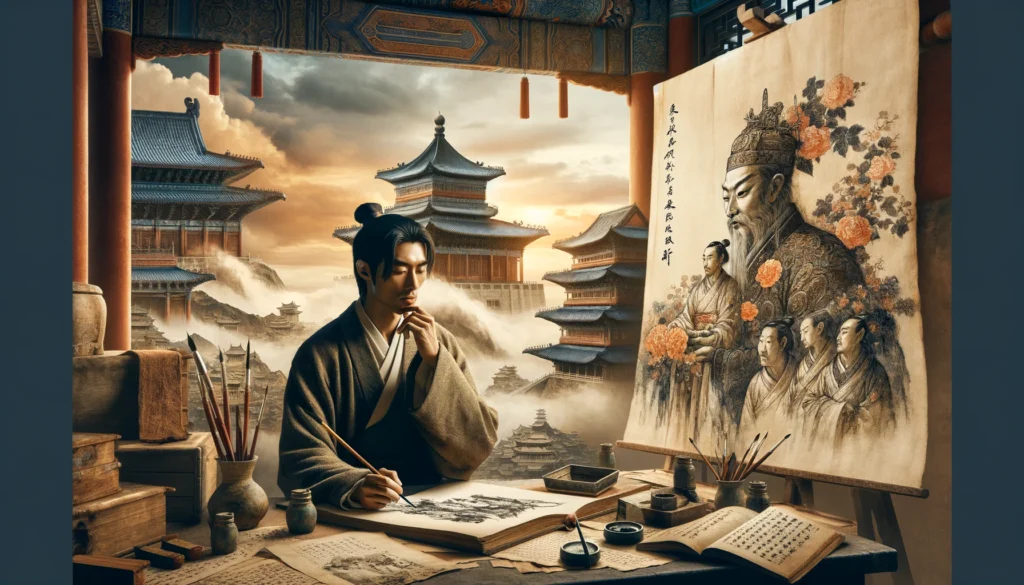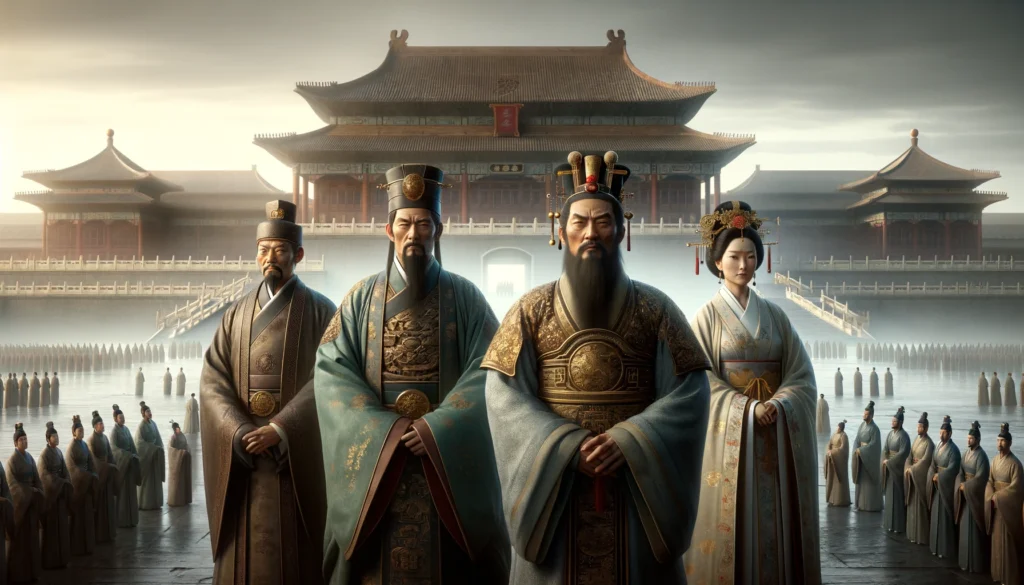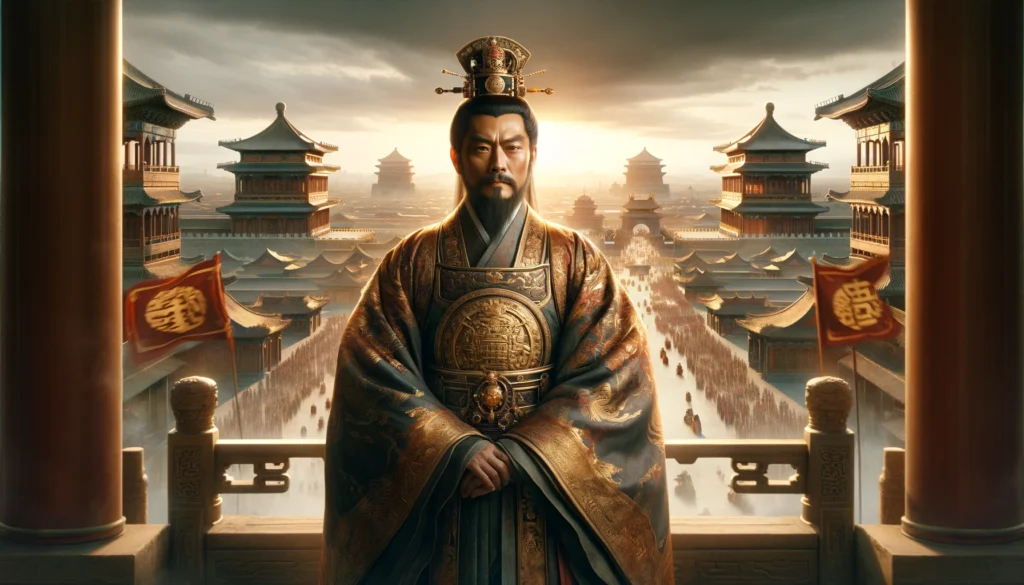Imagine a China bathed in the golden glow of cultural brilliance, where poets weave verses as exquisite as silk, artists capture the essence of life with a stroke of ink, and emperors lead a flourishing empire of innovation and prosperity. This, dear history enthusiasts, is the essence of the Tang Dynasty, a jewel that glitters even today in the vast expanse of Chinese history.
For those of you who thirst for knowledge of dynasties, fascinated by the ebb and flow of power, or simply captivated by the stories etched in time, this exploration is for you. We invite Chinese history lovers, dynasty history researchers, and students alike to embark on a captivating journey through the Tang Dynasty. Together, we’ll delve into the heart of this magnificent era, unraveling its dynasties, uncovering the secrets woven into its clothing styles, and meeting the key figures who shaped its destiny.
So, prepare to be swept away by the grandeur of imperial courts, dazzled by the vibrant hues of Tang fashion, and inspired by the achievements of legendary emperors and empresses. Are you ready to unlock the captivating story of the Tang Dynasty?
A Dynasty Ascends: From Humble Beginnings to Golden Reign

Before we delve into the vibrant tapestry of Tang culture and society, let’s first rewind and witness the dynasty’s rise to power. Buckle up, history buffs, for this is a tale of ambition, political intrigue, and ultimately, the triumph of the Li clan.
Founding Fathers and Early Strides:
- In 618 AD, Li Yuan, Duke of Tang, seized the opportunity amidst the crumbling Sui Dynasty, establishing the Tang lineage.
- The early years were marked by consolidation, with Emperor Gaozu working tirelessly to restore stability and establish a strong foundation.
- His son, the visionary Emperor Taizong, ushered in the “Reign of Zhenguan,” a period of unprecedented peace and prosperity.
Key Turning Points:
- The Tang Dynasty expanded its territory significantly, reaching its zenith under Emperor Xuanzong’s reign, encompassing vast swathes of Central Asia and even stretching its influence towards Korea.
- The Silk Road trade flourished, transforming Chang’an (modern-day Xi’an) into a bustling cosmopolitan center, a melting pot of cultures and ideas.
- Internal rebellions like the An Lushan Rebellion did shake the dynasty, but its inherent resilience allowed it to recover and continue its remarkable legacy.
Beyond Political Power:
- The Tang Dynasty didn’t just conquer lands; it conquered hearts and minds. Its cultural influence resonated far and wide, shaping neighboring kingdoms and leaving an indelible mark on East Asian history.
- This era witnessed an explosion of creativity, with poetry reaching unparalleled heights under the likes of Li Bai and Du Fu, while art and architecture blossomed with exquisite creations.
Life Under the Tang Sun: Unveiling Daily Rhythms and Cultural Expressions

Now, imagine yourself transported to the bustling streets of Chang’an, the Tang Dynasty’s vibrant capital. The air hums with the chatter of merchants hawking silk wares, the scent of spices fills your nostrils, and the sight of people adorned in flowing robes of intricate patterns dazzles your eyes. Welcome to the captivating world of Tang Dynasty daily life, where societal structure played a vital role and cultural expressions flourished!
A Tapestry of Social Classes:
- At the helm stood the imperial family and aristocrats, enjoying lavish lifestyles and wielding political power.
- Merchants and artisans formed the bustling middle class, contributing significantly to the economy through trade and craftsmanship.
- Farmers, the backbone of the society, toiled diligently to ensure food security, while soldiers upheld the dynasty’s military might.
Unveiling the Tang Dress Code:
- Fashion played a crucial role in defining social status. Silks in vibrant hues were a prized possession, adorned with intricate embroidery and flowing in graceful silhouettes.
- Women often wore elegant “ruqun” ensembles, consisting of a fitted bodice and a flowing skirt, accessorized with elaborate hairstyles and delicate jewelry.
- Men donned long robes called “pao” and “shan,” often accompanied by wide-brimmed hats and boots, exuding an air of sophistication.
Beyond Appearances: Exploring Cultural Delights:
- Leisure activities painted the city with vibrant hues. Poetry competitions, horse riding, and lively performances were popular pastimes.
- Tea houses buzzed with intellectual discourse and artistic exchange, while bustling markets offered a sensory feast of exotic goods and delicious cuisine.
- Buddhism flourished, influencing art, architecture, and daily life. Elaborate pagodas dotted the landscape, serving as centers of spiritual practice and pilgrimage.
A Symphony of Splendor: Exploring the Cultural Renaissance of the Tang Dynasty

Step beyond the bustling streets and delve into the heart of artistic expression during the Tang Dynasty. Buckle up, art enthusiasts and literature lovers, for we’re about to embark on a journey through a golden age of cultural achievements that continue to resonate today.
Poetry: Where Words Dance:
- The Tang Dynasty witnessed a pinnacle of Chinese poetry, with renowned figures like Li Bai and Du Fu composing verses that transcended time and space.
- Their poems, characterized by vivid imagery, emotional depth, and philosophical contemplations, captured the essence of the era and continue to inspire readers worldwide.
- From Li Bai’s “Drinking Alone under the Moon” to Du Fu’s “Spring Prospect,” these masterpieces paint a tapestry of emotions, landscapes, and historical reflections.
Art: Painting Beauty in Every Stroke:
- The Tang Dynasty saw a flourishing of diverse artistic styles, from landscape paintings capturing the vastness of mountains and rivers to detailed figure paintings depicting courtly life.
- Artists like Wu Daozi, renowned for his dynamic brushwork, and Zhou Fang, known for his graceful female figures, pushed the boundaries of technique and expression.
- Tang Dynasty art continues to mesmerize viewers with its vibrant colors, meticulous details, and powerful narratives.
Architecture: Where Stone Sings Songs of Grandeur:
- The Tang Dynasty left an indelible mark on architectural history, with monumental structures like the Big Wild Goose Pagoda in Xi’an and the Longmen Grottoes near Luoyang standing as testaments to their skill and artistry.
- These structures incorporated Buddhist influences, Chinese architectural traditions, and innovative techniques, creating masterpieces that blend functionality with aesthetics.
- From the intricate carvings of the grottoes to the soaring heights of the pagoda, Tang Dynasty architecture exudes a sense of power, harmony, and spiritual depth.
- Briefly mention a specific poem or painting that readers could research further
- Highlight the unique features of Tang Dynasty architecture, like the use of brackets and pagodas
- Touch upon the influence of Tang Dynasty culture on neighboring countries and beyond
Pillars of Power: Unveiling the Key Figures Behind the Tang Dynasty’s Grandeur

Now, let’s zoom in on the individuals who steered the ship of the Tang Dynasty, ensuring its remarkable journey through history. Prepare to meet emperors, empresses, and poets who left their indelible mark on this glorious era.
Emperor Gaozu: From Rebel to Renowned:

- Li Yuan, Duke of Tang, ignited the spark of rebellion against the Sui Dynasty, paving the way for the Tang Dynasty’s rise.
- As Emperor Gaozu, he focused on restoring stability and establishing a firm foundation for future success.
- His legacy? Unifying China after decades of turmoil and setting the stage for the “Reign of Zhenguan.”
Emperor Taizong: The Visionary Ruler:

- Li Shimin, known as Emperor Taizong, ushered in the golden age of the Tang Dynasty, aptly named the “Reign of Zhenguan.”
- A capable leader and patron of the arts, he fostered cultural and intellectual pursuits, attracting renowned scholars and artists to his court.
- His legacy? A period of peace, prosperity, and cultural flourishing that cemented the Tang Dynasty’s greatness.
Empress Wu Zetian: Breaking Barriers, Forging Destiny:

- Wu Zetian, the only female emperor in Chinese history, defied tradition and ascended the throne, shattering gender barriers and wielding immense power.
- A shrewd politician and patron of Buddhism, she oversaw territorial expansion and championed artistic endeavors.
- Her legacy? A complex and controversial figure, she pushed boundaries and left an undeniable mark on Tang Dynasty history.
Beyond the Throne: Literary Luminaries:
- The Tang Dynasty wouldn’t be complete without mentioning its literary giants. Li Bai, with his free-spirited verses celebrating nature and wine, and Du Fu, known for his profound social commentary and emotional depth, captivated the world with their poetry.
- Their legacies? These literary masters continue to inspire readers centuries later, their words transcending time and culture.
Echoes of Grandeur: The Enduring Legacy of the Tang Dynasty

As we approach the culmination of our journey through the Tang Dynasty, let’s reflect on its lasting impact and how it continues to resonate in the fabric of Chinese history and culture. Remember, history enthusiasts, this is not just a chronicle of the past; it’s a conversation with the present, revealing invaluable lessons and shaping our understanding of the world today.
Beyond Borders: A Cultural Legacy that Endures:
The Tang Dynasty’s influence wasn’t confined to China. Its cultural brilliance radiated outwards, shaping neighboring kingdoms and leaving an indelible mark on East Asia. From poetry and art forms adopted by Japan and Korea to the spread of the Silk Road, the Tang Dynasty’s legacy transcends geographical boundaries.
Foundations of Modern China:
Closer to home, the Tang Dynasty laid the groundwork for China’s future prosperity. Its advancements in law, administration, and military organization served as models for subsequent dynasties, shaping the very fabric of Chinese governance for centuries to come.
Lessons from the Past: Inspiration for the Future:
As we contemplate the Tang Dynasty’s rise and fall, we glean valuable lessons about leadership, cultural flourishing, and the cyclical nature of power. Its achievements inspire us to strive for innovation and excellence, while its struggles remind us of the importance of social harmony and sustainable development.
Frequently Asked Questions
Our exploration of the Tang Dynasty’s dazzling tapestry may be nearing its end, but the journey of discovery continues! This section addresses lingering questions and offers resources to fuel your further exploration. Buckle up, history enthusiasts, for the adventure doesn’t stop here!
Frequently Asked Questions:
Q: What were the biggest economic achievements of the Tang Dynasty?
The Tang Dynasty witnessed a flourishing economy thanks to factors like the Silk Road trade, advancements in agriculture, and a stable political climate. This led to increased wealth, urbanization, and cultural exchange.
Q: How does the Tang Dynasty influence modern China?
The Tang Dynasty left a profound mark on Chinese identity, from its emphasis on education and arts to its legal and administrative systems. This influence can be seen in various aspects of modern Chinese society, such as architecture, literature, and even social values.
Q: How did the Tang Dynasty compare to other dynasties, like the Sui and Song?
While the Sui Dynasty laid the groundwork for the Tang Dynasty’s rise, the latter surpassed it in cultural achievements, territorial expansion, and overall prosperity. The Song Dynasty, which followed the Tang, excelled in advancements in technology, science, and literature, but experienced more political instability.
Beyond the Blog:
Ready to delve deeper? Here are some resources to continue your Tang Dynasty exploration:
- Books: “China: A History” by John Keay, “The Search for Paradise: Tang Dynasty China” by Naomi Schottenheimer
- Documentaries: “The Emperors of China: Rise and Fall of the Tang Dynasty,” “Treasures of the Silk Road”
- Websites: Smithsonian National Museum of Asian Art, National Palace Museum in Taiwan
Join the conversation! Share your thoughts, questions, and favorite aspects of the Tang Dynasty in the comments below. Remember, history is a living conversation, and your contributions enrich the journey for everyone.
This concludes our exploration of the Tang Dynasty’s magnificence. We hope you were captivated by its cultural splendor, intrigued by its key figures, and inspired by its enduring legacy. Remember, dear history enthusiasts, this is just the beginning. Keep exploring, keep learning, and keep the Tang Dynasty’s echoes reverberating for generations to come!

